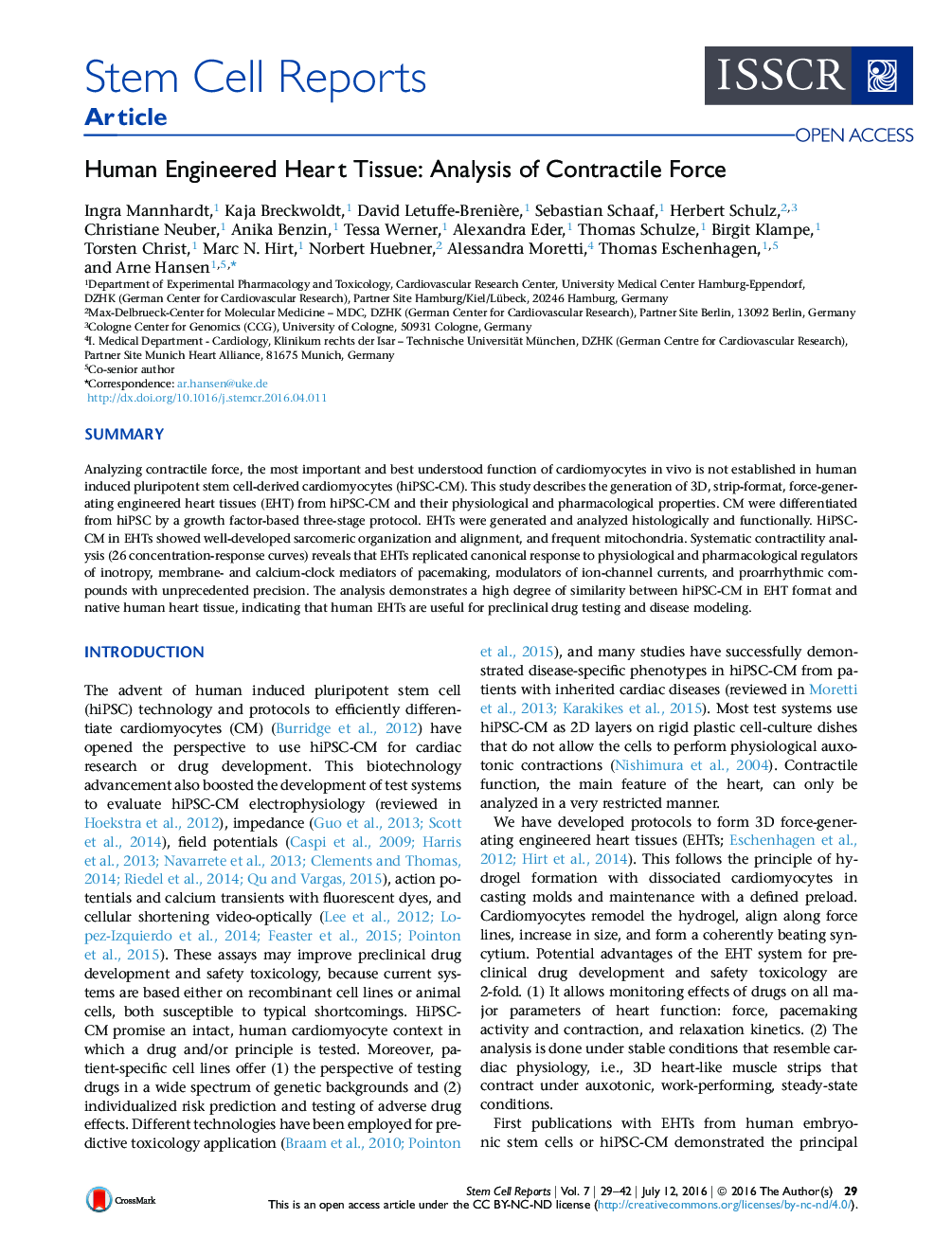| Article ID | Journal | Published Year | Pages | File Type |
|---|---|---|---|---|
| 2093240 | Stem Cell Reports | 2016 | 14 Pages |
•Engineered heart tissues (EHTs) from hiPSC-CM are generated with high reproducibility•EHTs show aligned cardiomyocytes with organized sarcomeres and immature t tubules•Spontaneous beating is regulated by both, membrane- and calcium-clock mechanisms•EHTs respond to physiological and pharmacological interventions like human heart tissue
SummaryAnalyzing contractile force, the most important and best understood function of cardiomyocytes in vivo is not established in human induced pluripotent stem cell-derived cardiomyocytes (hiPSC-CM). This study describes the generation of 3D, strip-format, force-generating engineered heart tissues (EHT) from hiPSC-CM and their physiological and pharmacological properties. CM were differentiated from hiPSC by a growth factor-based three-stage protocol. EHTs were generated and analyzed histologically and functionally. HiPSC-CM in EHTs showed well-developed sarcomeric organization and alignment, and frequent mitochondria. Systematic contractility analysis (26 concentration-response curves) reveals that EHTs replicated canonical response to physiological and pharmacological regulators of inotropy, membrane- and calcium-clock mediators of pacemaking, modulators of ion-channel currents, and proarrhythmic compounds with unprecedented precision. The analysis demonstrates a high degree of similarity between hiPSC-CM in EHT format and native human heart tissue, indicating that human EHTs are useful for preclinical drug testing and disease modeling.
Graphical AbstractFigure optionsDownload full-size imageDownload as PowerPoint slide
